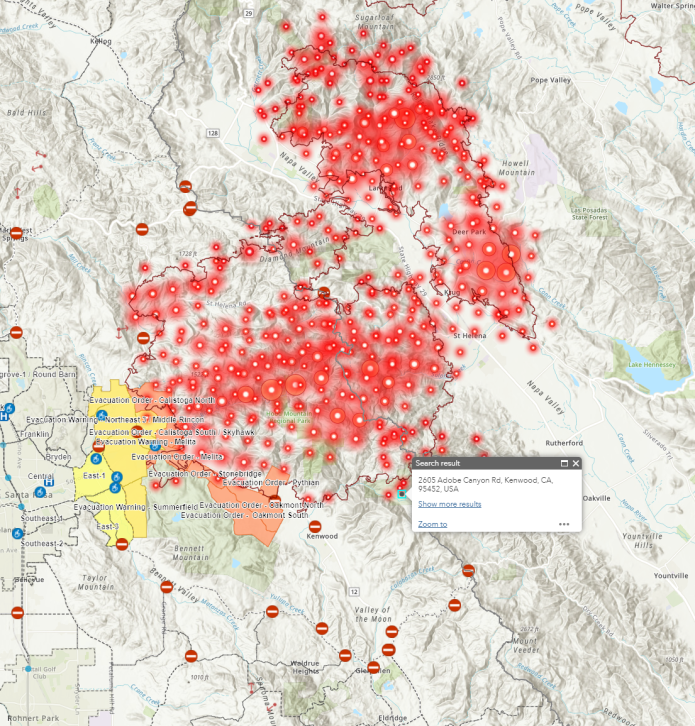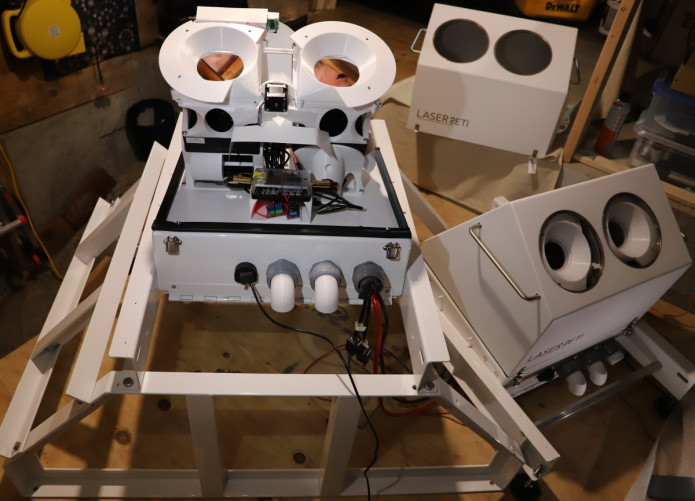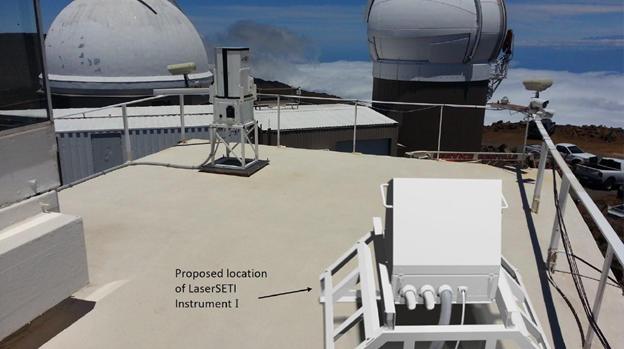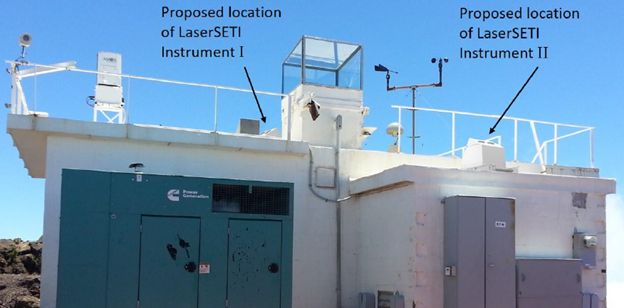Going to the Mountain
October 22, 2020
It’s exciting times for LaserSETI! In this update we’ll talk about the state of the instruments, both in California and Hawaii, and deployment plans for installing the latter.

As probably many of you heard, the fire season this year in California was unprecedented. Those of us in the Bay Area will likely always remember the Day It Looked Like Mars, which was a little bit neat for those of us who’ve dreamt of living on the Red Planet, but mostly scary – a pretty good simulation of a nuclear winter, perhaps. The most recent set of fires, generally referred to as the Glass Fires, did actually enter Sugarloaf Ridge Park where Ferguson Observatory and our LaserSETI CA instruments reside. Fortunately, CalFire proactively protected the observatory and worked hard to keep the fires from pushing any further south into the park. We’ll continue to work closely with the great team at Ferguson to do everything we can to keep the observatory safe, and our hearts go out to all those affected by these catastrophes. It really hits home for us at the SETI Institute when one of our colleagues lost his home in the Lightning Complex fires in the Santa Cruz mountains.

(You can follow Ferguson Observatory here)
The evacuation orders have lifted but Sugarloaf Ridge Park is still “closed for infrastructure repairs.” So, unfortunately, after a week of not being able to observe due to the smoke in the sky, we were then without power for over a week, and just got back on the sky two nights ago. But just last night, as a precautionary measure, I stopped the observing process and secured the instruments, because Pacific Gas & Electric started forecasting a Public Safety Power Shutoff (PSPS) in our area. When weather deemed hazardous to their infrastructure is forecasted, they shut power off to avoid starting more fires. This isn’t the first time in the past year that we’ve had extended observing interference, but I think it’s now the longest, most complicated, and dramatic!
As soon as possible, I’ll be heading up to check on the instruments and do some upgrades. I never saw any significant soot accumulate on the enclosure windows, but it’s a good time to double check and replace the air filters. I’ve got new light baffles which should have greater longevity and will reduce the pressure on the sunshade opening. And most importantly, I’ve got new LaserSETI decals to put on the covers, since we had to remove the old ones when we applied the white thermal paint.
Speaking of which, I thought everyone would enjoy seeing the newly built and tested instruments. It’s all white but the covers are white thermal paint to help keep the instruments cool, while the rest is simply powder coated so the instrument will blend in in situ. You can see the piano hinge of the new wiring box design which not only saves money, but makes it much easier to access that space. My favorite improvement, though, are the handles on the cover. That component weighs about 60 lbs. so now it’s much easier to remove and put back on! You can also see the new relays underneath the power distro box in the front, which now allow both computers to be rebooted by the other, in addition to the original capability of rebooting the cameras. If you want to learn more about the components and design, let us know and we can have a Facebook Live or dedicated update.

Long story short, the instruments here in California have taught us a lot on how the designs could be improved. The differences may not be immediately apparent to the untrained eye—which I suppose is a positive sign that our designs were pretty good to start with—but there are over two dozen separate improvements to the enclosure and supporting electronics. All of these have been incorporated into the two new instruments soon heading for Hawaii, and as many as possible retrofitted on the instruments installed at Ferguson. There’s not a lot we can do about the wildfires, high winds, power outages, and pandemics that slowed progress and interfere with observing, but we’ll keep doing whatever we can to be prepared and adjusting as necessary!
And finally, the big news is we’re finally able to announce our location in Hawaii. The University of Hawaii’s Institute for Astronomy has agreed to host the two instruments shown above on the summit of Haleakala on the island of Maui! The site is at 10,000 feet above sea level (3000m) and is absolutely outstanding.

As you can see on this rendering, we created for the state Site Plan Approval application, our neighbors will be PANSTARRS 1 and 2, another awesome project focused on transients! And if you were wondering why that truss was underneath one of the instruments in the previous picture, now you know: so we can see over the railing. It was no simple matter, however, for it to be able to tolerate winds over 130 mph! The other instrument doesn’t need that, as you can see from the rendering below.

We’re working on the shipping and final installation details now, but the good news is at least Hawaii’s mandatory 2-week COVID quarantine can now be bypassed with a negative rest result within 72 hours of flight departure. As it stands, we’re shooting for First Light to happen before the end of this year! It is 2020, though, so I would hold off ‘cashing that check’ until installation actually happens!
As usual, we’ll have a lot more to talk about in our next installment, probably 4 to 6 weeks from now, and I think you’ll find it worth the wait. As always, thanks so very much for all your support!